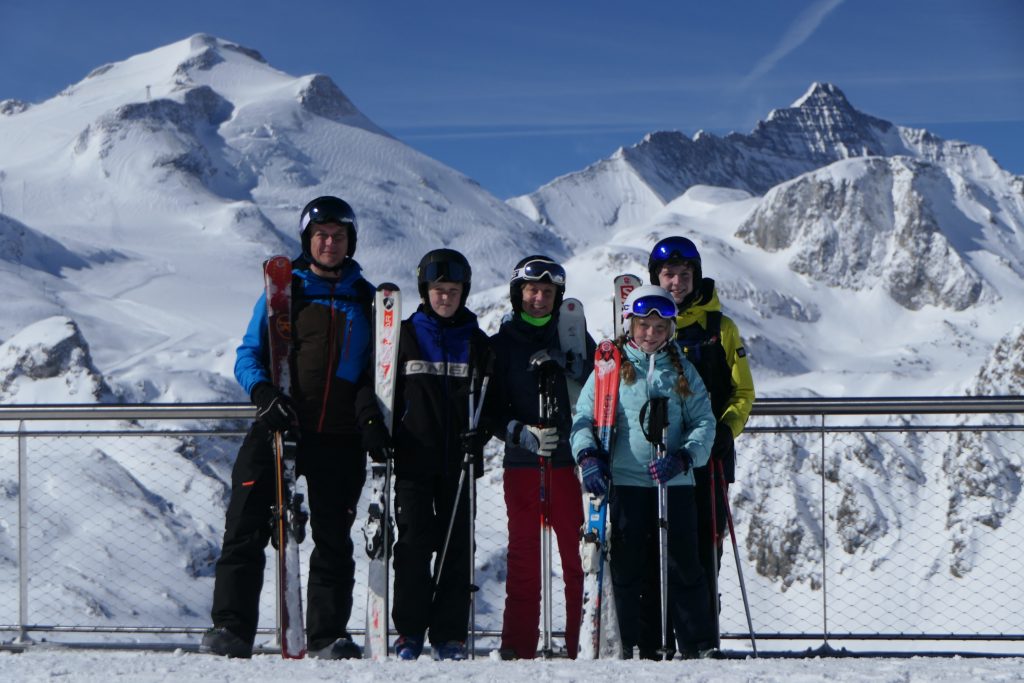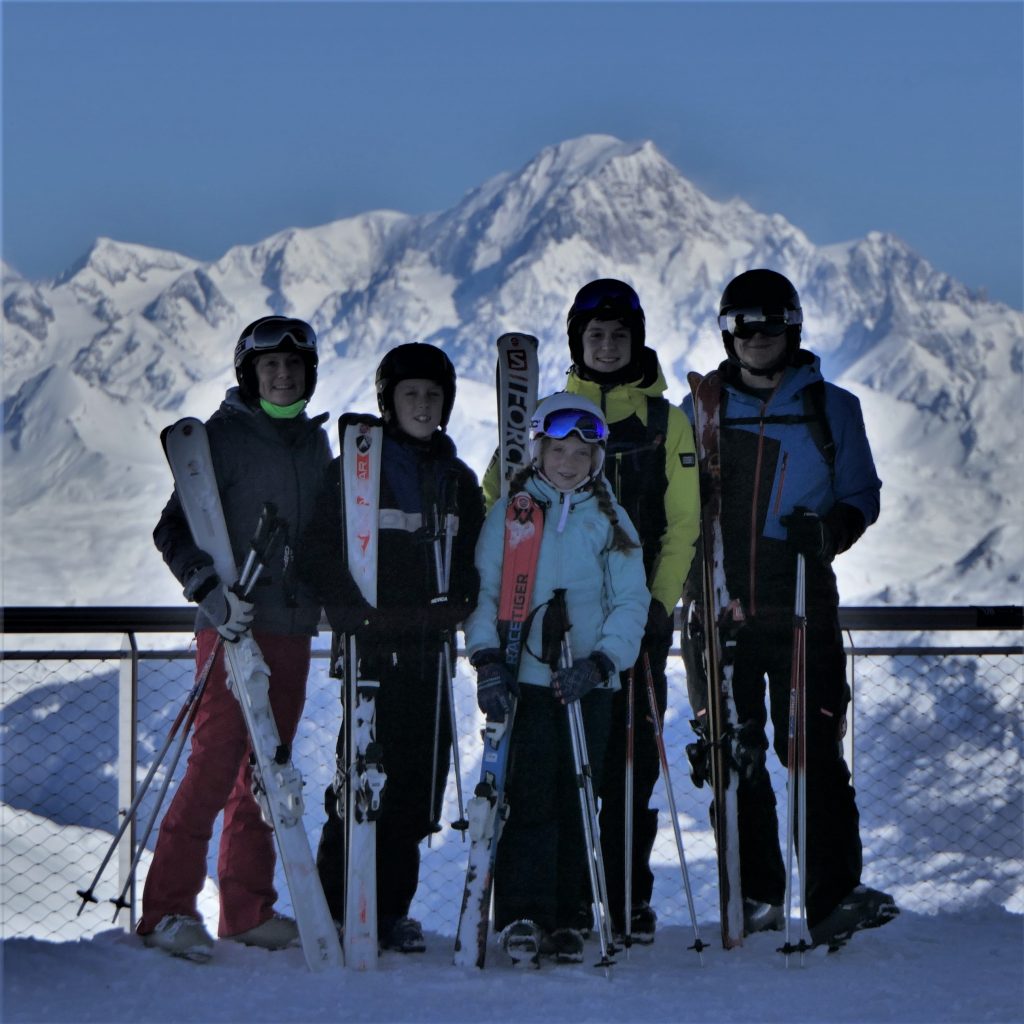Thomas – huge improvement and dynamics are visible – but so is some residual heel push to the side – work on angulation and reduce the rotation.
Molly – try to find time to experiment using the outside edge of the uphill ski to start your turn from – honestly – it’s much easier than a plough!
Helen – much improved stance, more forward and dynamics visible – just bring the skis closer so as to start using that outside edge and work on angulation to reduce the whole body rotation.
Nick – nice and fluid – good dynamics, independent leg action and control of rotation
Finally the sunshine returned and it was possible to get around the mountains without being thrashed by unrelenting weather.
Day 3 started on a red run – in god condition – where I wanted to keep an eye on Molly. Even the “braking plough” is quite hard to do when it gets steep so it was a moment worth spending trying to get Molly to go beyond her ploughs and very wide stance.
From a narrow stance – bringing the uphill ski down parallel and close to the downhill ski so that both skis are on their uphill edges the idea was to hold that uphill knee “in” close to the lower knee – by pulling tight the adductor muscle (inside of upper leg) – separating the edge of the ski (uphill edge) from the edge of the foot (downhill edge) and using this to start a pivot into the new turn – skis held parallel. Still a step too far for Molly but it’s good to get the idea into her awareness. Pulling that uphill ski “inward” is so much easier than pushing it “outward” – once you realise that it works.
Thomas was suffering from a stiff neck after yesterday’s wipeout when shussing to make it across the plateau above the gondola from Tignes 1800. (When returning by the same route this afternoon I found a huge lump of hard ice there that the piste machines hadn’t flattened and hit it even in good visibility – clearly the same obstacle that took Thomas out in the whiteout the day before – unusual to say the least!) Thomas bravely chose to continue skiing and responded well when corrected for reverting to pushing his tails out to the side when descending the Tovière.
Foot Forward Technique
The ski turns you because as you “fall over” the ski cuts under the trajectory of your centre of mass and lifts you back up – the result being a turn. Bicycles work exactly the same way. Pushing the support foot forward from start to end of the turn speeds up the “under cutting” and so tightens up the turn radius. We used a static exercise with the skis off to develop the correct feeling. This video below from ice hockey training displays the same mechanics of movement. The goal was to tighten Molly’s turns and increase her active use of dynamics indirectly. Everyone should benefit from this – it’s how turn radius is altered when using dynamics.
Angulation
Everyone was shown how to face the pelvis downhill (instead of turning the body to face downhill from the shoulders). The goals was to allow everyone to experience the reflex of the lower abdominal postural muscles – and how to activate this. There is more about this at the link “ChiSkiing“.
The reason for angulation is to prevent rotation of the body – or even just rotation of the pelvis (hip rotation) which causes loss of control in skiing. This is also preparation for having the upper body oriented in a manner making movement of the centre of mass over the front of the downhill ski accessible when skiing parallel. We were already trying to move in this manner with the pole plant assisted pivot turns – but there was not enough time to develop this (turn completion dynamics) for dynamic skiing – though some of it will happen naturally.
To make things easier you just need to relate to the outside leg in the turn – first of all extending the leg (uphill edge, uphill ski) to project the centre of mass downhill, then pushing that foot forward, pulling that hip backward and finally letting that ski cut underneath at the end of the turn to lift you back up (and over the front…)
Self Organisation
The non-stop information being dished out is deliberate – because everything is interconnected and nothing can be effectively mastered independently. There’s a physical phenomenon called “self-organisation” studied as a branch of science and it shows how in nature there is a process of higher levels (hierarchies) spontaneously developing as a result. Work at all of the parts that have been touched upon this week and this form of learning will almost magically happen.
The writer Edward de Bono coined his concept of “Lateral thinking” to describe Self Organisation – explaining that this is the way that learning really takes place – it’s not linear – and it “happens to us”.



